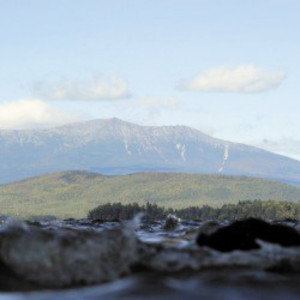 In recent weeks, President Obama designated more than 87,600 acres of forestland in Maine’s North Woods as a national monument, capping a years-long quest by a controversial conservationist on the eve of the National Park Service’s centennial.
In recent weeks, President Obama designated more than 87,600 acres of forestland in Maine’s North Woods as a national monument, capping a years-long quest by a controversial conservationist on the eve of the National Park Service’s centennial.
With a unilateral stroke of his pen, Obama created the Katahdin Woods and Waters National Monument in an area that was once the heart of Maine’s logging and papermaking industry, but now faces an uncertain economic future. Within hours, the National Park Service was in the process of opening offices in the Katahdin region while inviting visitors to discover the monument’s “rivers, streams, woods, flora, fauna, geology, and the night skies that have attracted humans for millennia.”
Supporters hope the monument designation – on lands bordering Baxter State Park that were donated by Roxanne Quimby – will lure additional jobs and economic development while highlighting the region’s natural beauty and history. Proponents also argued that the monument will prove a powerful draw to some of the nearly 3 million annual visitors to Acadia National Park, which ranks among the National Park Service’s busiest destinations.
Philanthropist Roxanne Quimby has long advocated for creating a national monument in Maine’s North Woods.
Farmer said the foundation paid $120,208.29 in property taxes to several unorganized townships at the property transfer closing this week. He also said the federal government will make payments in lieu of taxes to local governments to compensate for the loss of annual property taxes resulting from the monument designation.
“We believe Penobscot County will actually see an increase in revenue, not to mention an increase in jobs and economic activity,” Farmer said.
The designation creates a large public availability in Maine’s North Woods, a rugged area that has long attracted visitors to fish its famed trout streams, hunt for moose or paint the landscapes. It also represents a partial yet substantial victory for Quimby, the wealthy co-founder of Burt’s Bees cosmetics, who had failed to win congressional support for a national park.
“It’s a project my mom started almost two decades ago, so it’s amazing that here we are,” said Lucas St. Clair, Quimby’s son and the public face of the recent push to build support for a national monument. “So it feels great. We have been working on this for a long time.”
The land will be managed by the National Park Service and will be open for a host of recreational activities, notably hiking, camping, whitewater paddling and fishing. Hunting and snowmobiling – two so-called “traditional uses” that are important to the year-round local economy – will apparently be allowed on some, but not all, of the 87,654 acres.
The deeds specify that hunting, for instance, will be allowed “on parcels east of the East Branch of the Penobscot River,” and existing arrangements between the state and Elliotsville Plantation for snowmobile routes will be preserved. But the deeds that Quimby attached to the land transfer prohibit bear hunting using bait or dogs, issues that were hotly debated in 2014 during a failed ballot initiative.
St. Clair said work is already underway to re-deck bridges and improve roads. “I want to make sure the communities are able to fully benefit from this, and whatever I can do to help, I’m going to do,” St. Clair said.
The park service wasted no time promoting the nation’s newest national monument, the 413th land unit added under the service’s umbrella.
The park service also created a website for Katahdin Woods and Waters National Monument and released a YouTube video celebrating the 100th park service anniversary with scenes of the new monument.
“As the National Park Service begins a second century of conservation, the president’s designation of Katahdin Woods and Waters National Monument serves as an inspiration to reflect on America’s iconic landscapes and historical and cultural treasures,” said Interior Secretary Sally Jewell in a written statement. “Through this incredibly generous private gift for conservation, these lands will remain accessible to current and future generations of Americans, ensuring the rich history of Mainers’ hunting, fishing and recreation heritage will forever be preserved.”
National monuments are, in many respects, nearly identical to the better-known national parks, although they often do not have the same cachet among tourists. The key difference is that while only Congress can create a national park, the law allows the president to use executive action to preserve historic or scientifically significant federally owned lands.
Obama’s nine-page executive order recaps the monument’s lengthy history, including the Native Americans’ continual use of the land, visits by such dignitaries as Henry David Thoreau and John James Audubon, and its place in Maine’s forestry industry. It also describes the land’s natural resources in glowing terms.
“Katahdin Woods and Water’s daytime scenery is awe-inspiring, from the breadth of its mountain-studded landscape, to the channels of its free-flowing streams with their rapids, falls and quiet water, to its vantage for viewing the Mount Katahdin massif, the ‘greatest mountain,’ ” reads the executive order. “The area’s night skies rival this experience, glittering with stars and planets and occasional displays of the aurora borealis, in this area of the country known for its dark sky.”
Obama has used his power under the 1906 Antiquities Act to protect more land and water using national monument designations than any other president. He has created two dozen national monuments during his presidency.















Follow Us